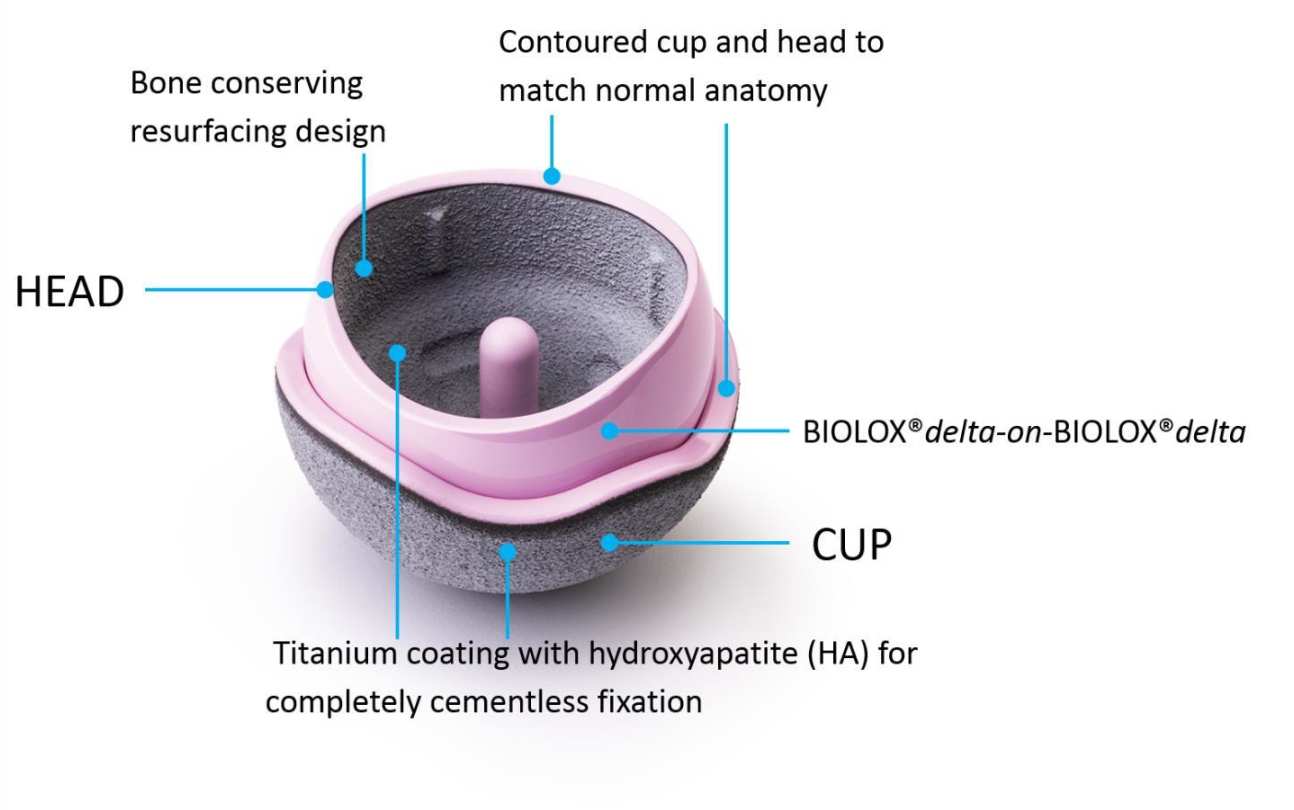H1 Hip Resurfacing Arthroplasty
H1 Hip Resurfacing Arthroplasty Clinical Investigation
REC REF: 17/EE/0330
The H1
The H1 Hip Resurfacing Arthroplasty (HRA) implant is designed and manufactured by Embody Orthopaedic, the sponsor of the Clinical Investigation.
Investigation Objectives
The Investigation is a multi-centre, prospective, non-randomized, observational study to evaluate the clinical outcome of the H1 implant.
The primary objective is to confirm the safety and efficacy of the H1 implant by demonstrating non-inferiority compared to the Birmingham Hip Resurfacing (where revision of the device is deemed a failure).
Find out more about the H1 Clinical Investigation.
Investigation Status
March 2020: Recruitment is currently paused.
Overview
HRA is a highly effective solution for many patients with pain and disability from end-stage hip arthritis. Compared to Total Hip Arthroplasty (THA), resurfacing provides a higher level of function by more closely mimicking the native hip shape. Resurfacing is also associated with lower hip dislocation rates and lower mortality.
Currently, available resurfacing implants are mostly made of metal-on-metal articulations, which can generate metal wear debris potentially causing soft tissue reactions. These reactions occur more often in smaller sized hips and women, and therefore are not commercially available in small sizes or for women.
The H1 implant components are made of BIOLOX®delta ceramic. This non-toxic material has been successfully used as a bearing in many total hip replacements but is not yet commercially available in an HRA device. The H1 implant is uncemented; its components are fixed to the bone by a porous titanium coating sprayed with hydroxyapatite, a naturally occurring bone mineral. The rims of the components are contoured to match normal hip anatomy closer than existing designs.
In theory, the H1 implant will prove at least as equally effective in restoring function as existing HRA designs, without the risks associated with metal or cement. The H1 implant is suitable for both men and women and it will offer young and active patients a more conservative alternative to total hip arthroplasty.
We must stress that the benefits and potential downside of the H1 hip resurfacing implant are currently not known and are being evaluated in this study. We wish to test these potential benefits by making a long-term commitment to follow patients who consent to the new H1 HRA for 10 years after their operation.
Find out more about the H1 Patient Experience.



